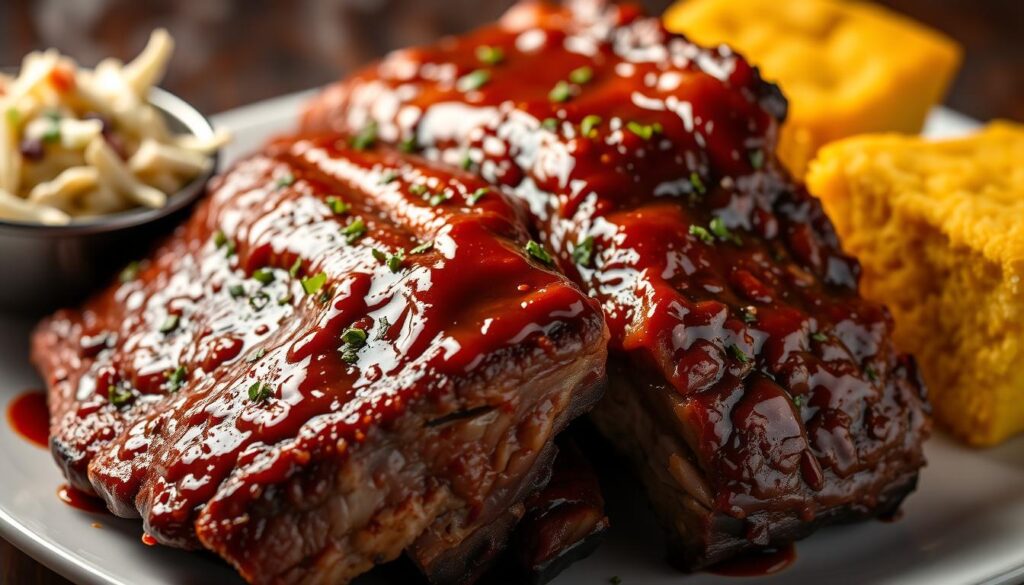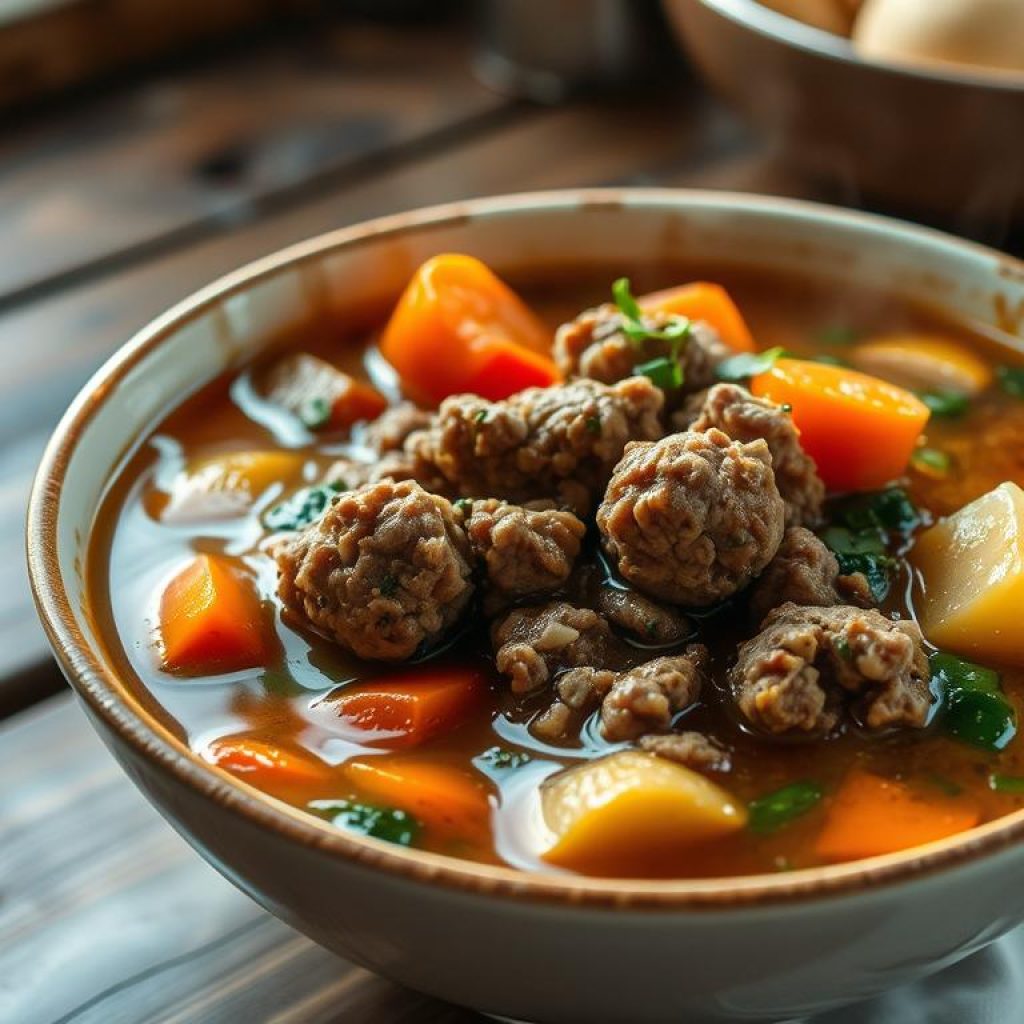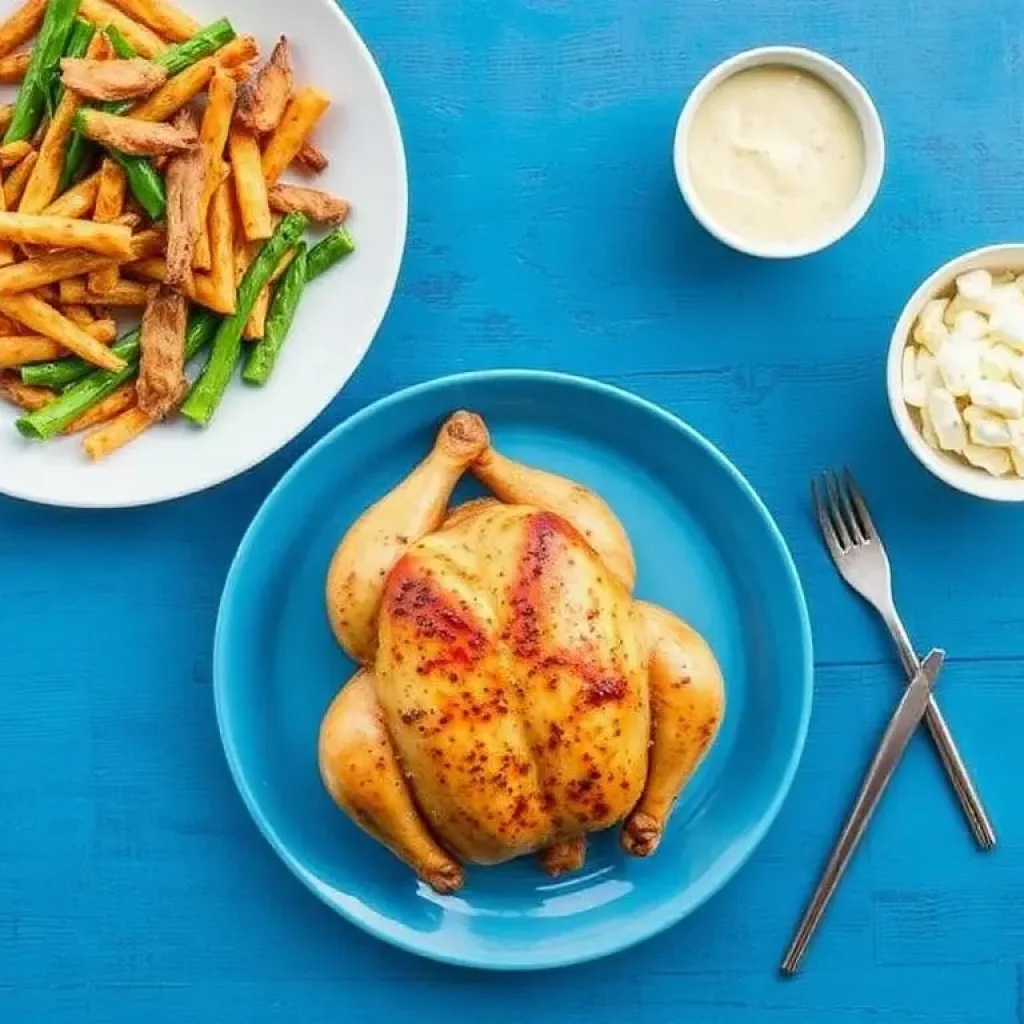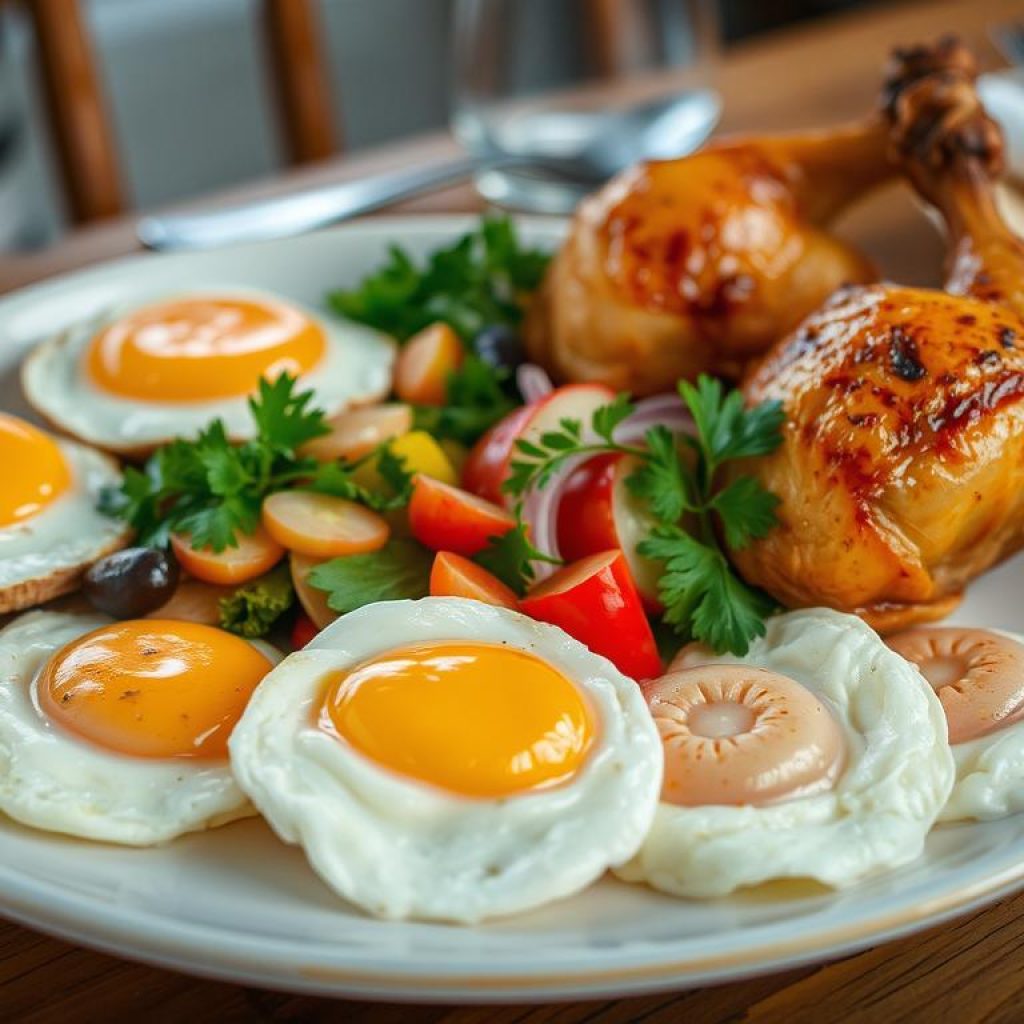The ground beef bulgogi recipe is a key dish in Korean cuisine. It’s easy to make and tastes amazing. This recipe lets you enjoy the bold flavors of Korea. It’s perfect for both seasoned chefs and kitchen beginners.
To start making ground beef bulgogi, you need to know about Korean cuisine. You also need to learn how to adjust this recipe to your liking. From the marinade to cooking, each step is important for a delicious dish. Follow these tips to make a great ground beef bulgogi at home.
Table of Contents
Key Takeaways
- Understanding the basics of Korean cuisine is crucial for making an authentic ground beef bulgogi recipe
- Using high-quality ingredients is essential for bringing out the bold flavors of this easy bulgogi recipe
- Marinating the ground beef is a critical step in creating a tender and flavorful Korean ground beef recipe
- Experimenting with different marinade ingredients can help you find your perfect ground beef bulgogi recipe
- Practicing various cooking methods can help you achieve the perfect texture and flavor in your ground beef bulgogi dish
Understanding Korean Bulgogi: A Brief History
Korean bulgogi has a long history, starting in the Goguryeo era. It’s made by marinating thin meat slices in a homemade bulgogi sauce. This sauce’s taste can change based on where you are and who you ask.
Exploring bulgogi shows it’s more than just food. It’s a big part of Korean culture. You’ll find many recipes, including ones with ground beef. Ground beef is a tasty option for bulgogi, especially with a simple bulgogi marinade.
Traditional Bulgogi vs Modern Adaptations
Old bulgogi recipes use a homemade bulgogi sauce with soy sauce, sugar, garlic, and sesame oil. New recipes might add different ingredients and ways to cook. The secret to great bulgogi is balancing flavors, which a simple bulgogi marinade can help with.
Why Ground Beef Works Well
Ground beef is popular for bulgogi because it’s cheap and easy to use. It soaks up the flavors of a homemade bulgogi sauce well. With a simple bulgogi marinade, ground beef makes a tasty dish like the traditional one.
Cultural Significance in Korean Cuisine
Bulgogi is more than food; it’s a big part of Korean culture. It’s served at special times and is common in Korean homes. Whether you use a simple bulgogi marinade or a homemade bulgogi sauce, it’s a dish full of history and flavor.
Essential Ingredients for Ground Beef Bulgogi Recipe
To make a quick bulgogi dish, you’ll need a few key ingredients. Start with ground beef, choosing lean or regular based on your taste. For flavor, mix Asian spices like garlic, ginger, and sesame oil.
For vegetables, pick from a variety of options. You can use thinly sliced onions, crushed bell peppers, grated carrots, and mushrooms like shiitake or button. These add texture, flavor, and nutrients.
Remember to garnish with green onions and sesame seeds. They bring color and freshness to your dish.
The secret to a flavorful bulgogi seasoning lies in soy sauce, sugar, and sesame oil. These give your dish a rich, savory taste typical of Korean cuisine. For a spicy twist, add Korean chili flakes, or gochugaru.
Here’s a quick rundown of what you’ll need for a ground beef bulgogi recipe:
| Ingredient | Quantity |
|---|---|
| Ground beef | 1 lb |
| Onions | 1 cup, thinly sliced |
| Bell peppers | 1 cup, crushed |
| Garlic | 2 cloves, minced |
| Ginger | 1 tsp, grated |
| Soy sauce | 2 tbsp |
| Sugar | 1 tsp |
| Sesame oil | 1 tsp |
Creating the Perfect Bulgogi Marinade
To make delicious ground beef bulgogi, you need a perfect marinade. The marinade is key to bulgogi’s unique taste. It combines sweet and savory flavors, like soy sauce, garlic, and sugar.
Key Marinade Components
The marinade includes soy sauce, garlic, sugar, and sesame oil. These ingredients tenderize the beef and add flavor. You can also add ginger, green onions, and black pepper for more taste.
Balancing Sweet and Savory Flavors
It’s important to balance sweet and savory in the marinade. Adjust sugar and soy sauce to your liking. More sugar makes it sweeter, while more soy sauce makes it savory. Find the right mix for your taste.
Marinade Timing Guidelines
Marinade time is key for tasty ground beef bulgogi. Marinate for at least 30 minutes for flavor. For a stronger taste, marinate up to 2 hours. Here are some guidelines:
- 30 minutes to 1 hour: Mild flavor
- 1-2 hours: Medium flavor
- 2-4 hours: Strong flavor
Follow these tips and an easy bulgogi recipe for a flavorful dish. It’s great for any occasion.
| Marinade Time | Flavor Intensity |
|---|---|
| 30 minutes | Mild |
| 1 hour | Medium |
| 2 hours | Strong |
Kitchen Tools and Equipment You’ll Need
To make a tasty Korean ground beef recipe, you need the right tools. Having the right items makes cooking easier and faster. For homemade bulgogi sauce, a blender or food processor is key to mix the ingredients.
Here’s a list of essential tools and equipment you’ll need:
- A large bowl for marinating the ground beef
- A cutting board for chopping vegetables and herbs
- A chef’s knife for slicing and dicing ingredients
- A blender or food processor for making the homemade bulgogi sauce
- A Korean-style grill pan or a large skillet for cooking the ground beef
- Tongs or a spatula for turning and serving the dish
Having the right equipment is crucial for a great Korean ground beef recipe. With these tools, you can make a delicious homemade bulgogi sauce.
Also, make sure you have all the ingredients ready. For homemade bulgogi sauce, you’ll need soy sauce, sugar, garlic, and sesame oil. With the right tools and ingredients, you can make a tasty Korean ground beef recipe.
Step-by-Step Ground Beef Bulgogi Preparation
To make a tasty ground beef bulgogi, start by handling the meat. Break it down into smaller pieces for even cooking. A good bulgogi marinade is key to flavor. It’s important to mix sweet and savory flavors well.
Here are the steps to follow:
- Prepare your ingredients, including ground beef, vegetables, and a simple bulgogi marinade.
- Mix and marinate the ground beef, making sure it’s coated evenly with the marinade.
- Cook the bulgogi using your preferred method, such as grilling, stir-frying, or cooking in a skillet.
Cooking times vary by method. Grilled bulgogi cooks for 5-7 minutes per side. Stir-frying needs constant stirring and cooks in 3-5 minutes. A good marinade and a reliable recipe are crucial for a great bulgogi.
By following these steps and using a simple bulgogi marinade, you’ll make a delicious dish. Always use fresh ingredients and cook to the right temperature for safety.
| Cooking Method | Cooking Time | Temperature |
|---|---|---|
| Grilling | 5-7 minutes per side | Medium-high heat |
| Stir-frying | 3-5 minutes | High heat |
| Cooking in a skillet | 5-7 minutes | Medium heat |
Secret Tips for Authentic Flavor
To get a real and tasty bulgogi flavor, you need top-notch ingredients. This includes flavorful bulgogi seasoning. This seasoning mix is key to the dish. It’s perfect for a quick bulgogi dish because it saves time and effort.
Here are some tips to boost your bulgogi’s flavor:
- Use a mix of soy sauce, sugar, and garlic for a deep, savory marinade.
- Add a bit of sesame oil for a nutty, aromatic taste.
- Grate some ginger to add a spicy, warm flavor.
By using these tips and the right ingredients, you can make a flavorful bulgogi seasoning. This will take your dish to the next level. Whether it’s a quick bulgogi dish or a big meal, the secret is in the ingredients and how you prepare them.
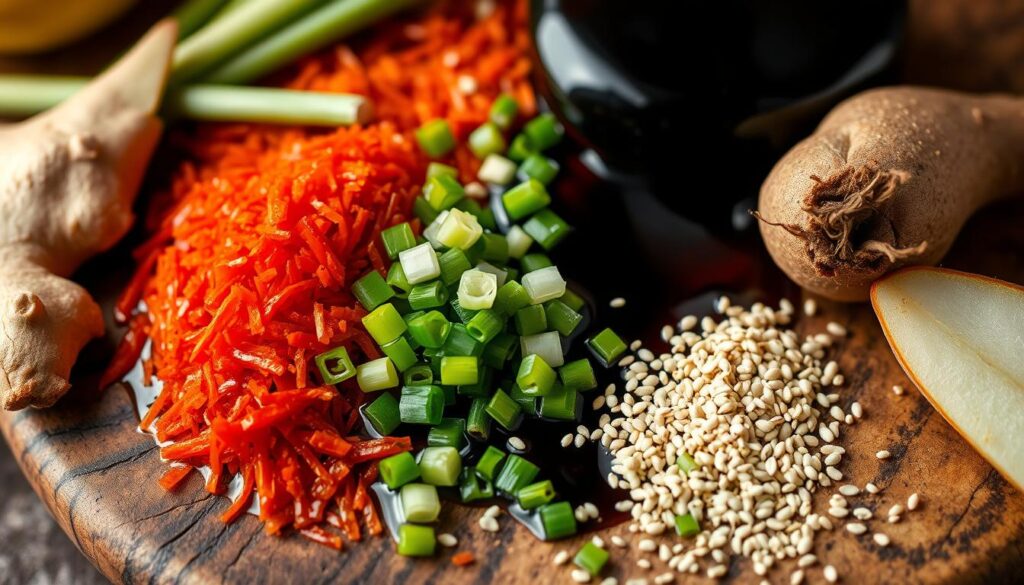
With these secrets and a bit of practice, you’ll make an authentic, delicious bulgogi. It will wow your friends and family.
Common Mistakes to Avoid
When making an easy bulgogi recipe, knowing common mistakes is key. These mistakes can ruin the flavor and texture of your ground beef bulgogi. Pay close attention to temperature, seasoning, and texture.
By avoiding these mistakes, you’ll make a dish that will wow everyone. Here are some mistakes to watch out for:
Temperature Control Issues
Controlling the temperature is vital when cooking ground beef bulgogi. If the heat is too high, the meat can dry out. If it’s too low, it won’t cook evenly.
Seasoning Errors
Seasoning is crucial for a tasty ground beef bulgogi. Too much or too little of any ingredient can mess up the flavors. Always taste and adjust the seasoning as you go.
Texture Problems
Texture issues can happen if the meat isn’t cooked right. Overcooking makes it tough and chewy. Cook the meat until it’s just done, then let it rest before serving.
By avoiding these mistakes, you’ll make a delicious ground beef bulgogi. With a simple recipe and some practice, you’ll be a pro in no time.
| Mistake | Effect | Solution |
|---|---|---|
| Temperature control issues | Overcooked or undercooked meat | Use a thermometer to monitor temperature |
| Seasoning errors | Unbalanced flavors | Taste and adjust seasoning as you go |
| Texture problems | Tough or chewy meat | Cook meat until just done, then let it rest |
Delicious Side Dish Pairings
When you serve ground beef bulgogi, pick sides that match its rich taste. Korean ground beef recipes often come with various sides to balance the meal.
Traditional Korean choices include kimchi, a spicy cabbage dish, and bibimbap, a rice bowl with many vegetables. For something new, try a green salad or roasted veggies with your bulgogi.
Here are some other side dish ideas that go well with bulgogi:
- Steamed bok choy with soy sauce and garlic
- Grilled or sautéed mushrooms with sesame oil and ginger
- A side of japchae, a stir-fried glass noodle dish
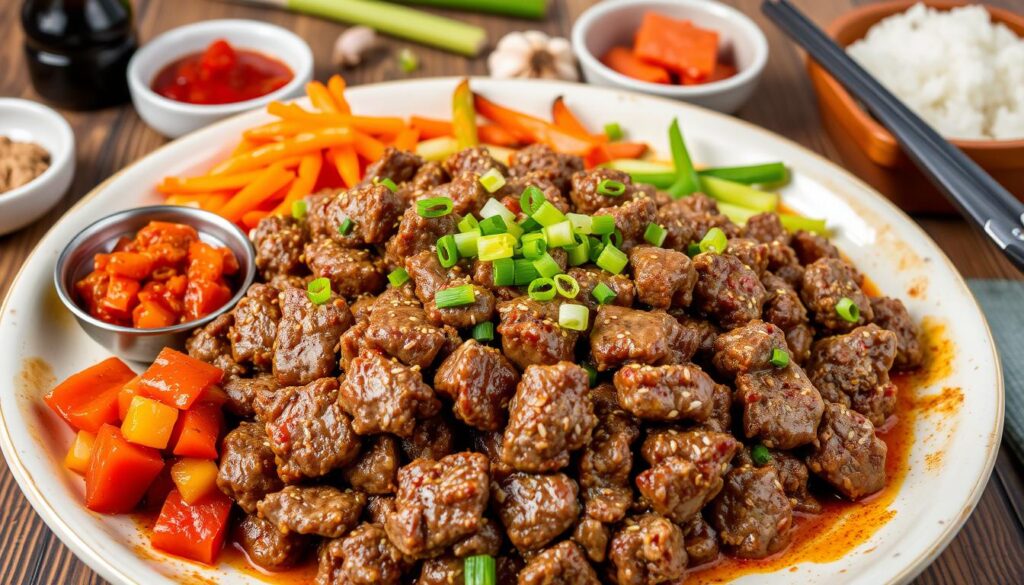
These sides add different textures and tastes to your meal. They make your ground beef bulgogi recipe complete and fulfilling.
| Side Dish | Description |
|---|---|
| Kimchi | Spicy fermented cabbage dish |
| Bibimbap | Rice bowl topped with assorted vegetables |
| Steamed Bok Choy | Steamed bok choy with soy sauce and garlic |
Storage and Reheating Guidelines
To keep your best bulgogi recipe fresh, follow these storage and reheating tips. Let the bulgogi cool down to room temperature. Then, store it in an airtight container in the fridge for up to 3 days. You can also freeze it for up to 2 months.
When reheating, make sure it reaches 165°F (74°C) to stay safe. You can reheat it in the microwave, on the stovetop, or in the oven. For extra flavor, add some extra sauce or seasoning during reheating.
- Refrigerate cooked bulgogi at 40°F (4°C) or below
- Freeze cooked bulgogi at 0°F (-18°C) or below
- Reheat bulgogi to an internal temperature of at least 165°F (74°C)
By following these tips, you can enjoy your bulgogi at its best, even after the first meal. Always check for signs of spoilage before eating. If it smells bad, looks slimy, or has mold, throw it away.
With the right storage and reheating, you can enjoy your best bulgogi recipe and simple bulgogi marinade for longer. It’s perfect for meal prep or leftovers.
Healthy Adaptations and Dietary Modifications
Creating a quick bulgogi dish can be tailored to fit your dietary needs. With a few tweaks, you can enjoy a flavorful bulgogi seasoning that suits your lifestyle. Whether you’re after low-carb or gluten-free options, there are many ways to modify the traditional recipe.
To begin, think about using ingredients that are lower in carbs. Swap traditional noodles for zucchini noodles or shirataki noodles, which are low in calories and carbs. Also, use a sugar-free sweetener like stevia or erythritol to cut down on sugar in the dish.
Low-Carb Options
- Use zucchini noodles or shirataki noodles instead of traditional noodles
- Choose sugar-free sweeteners like stevia or erythritol
- Select low-carb vegetables like bell peppers, mushrooms, and snow peas
Gluten-Free Variations
For those with gluten intolerance or sensitivity, making the bulgogi dish gluten-free is easy. Just swap traditional soy sauce for a gluten-free version, and use gluten-free stir-fry sauce. You can also opt for gluten-free noodles or cauliflower rice as a low-carb choice.
By making these simple changes, you can enjoy a healthy and tasty quick bulgogi dish. With flavorful bulgogi seasoning and a few creative substitutions, you can make a dish that’s both nutritious and delicious.
| Dietary Modification | Ingredients to Use | Ingredients to Avoid |
|---|---|---|
| Low-Carb | Zucchini noodles, sugar-free sweeteners | Traditional noodles, sugar |
| Gluten-Free | Gluten-free soy sauce, gluten-free stir-fry sauce | Traditional soy sauce, gluten-containing stir-fry sauce |
Conclusion: Mastering Your Ground Beef Bulgogi
Creating the perfect ground beef bulgogi is all about the basics. You need to know how to marinate, cook, and serve it. This will help you make easy bulgogi recipes that taste amazing.
The secret to great ground beef bulgogi is finding the right mix of sweet, savory, and umami. Try different marinades and ingredients to make it your own. Don’t be shy to add your own twist to this classic dish.
Ground beef bulgogi can be a main dish or part of something new. It’s all about exploring and being creative. With these tips, you’re ready to become a ground beef bulgogi expert in your kitchen.
FAQ
What is the difference between traditional bulgogi and ground beef bulgogi?
Traditional bulgogi uses thinly sliced beef. Ground beef bulgogi uses ground or minced beef. Both have the same bold, flavorful marinade and cooking techniques. But, they differ in texture and cooking method.
Why is ground beef a good choice for bulgogi?
Ground beef is great for bulgogi because it soaks up marinade flavors well. It also cooks quickly. The uniform pieces help achieve the right texture and caramelization.
What are the essential ingredients in a bulgogi marinade?
A bulgogi marinade needs soy sauce, brown sugar, garlic, ginger, and sesame oil. These ingredients create the sweet and savory flavor of authentic bulgogi.
How long should I marinate the ground beef before cooking?
Marinate the ground beef for at least 30 minutes. But, 2-4 hours is best. This lets the flavors penetrate the meat and tenderize it.
What are some common mistakes to avoid when making ground beef bulgogi?
Avoid overcooking the meat and using too much seasoning. Also, don’t forget to control the cooking temperature. Paying attention to moisture and texture helps avoid mistakes.
What are some tasty side dishes that pair well with ground beef bulgogi?
Try kimchi, steamed rice, and sautéed spinach as traditional Korean sides. For something new, add a fresh Asian slaw or roasted vegetables. They complement the bold bulgogi flavors.
Can I make ground beef bulgogi in advance and reheat it later?
Yes, you can make it ahead and reheat. Store it in an airtight container in the fridge for 3-4 days. Reheat in a skillet or microwave, but don’t overcook.
How can I modify the ground beef bulgogi recipe to be low-carb or gluten-free?
For a low-carb version, reduce or omit brown sugar. Serve over cauliflower rice or zucchini noodles. For gluten-free, use tamari or gluten-free soy sauce instead of regular soy sauce.



